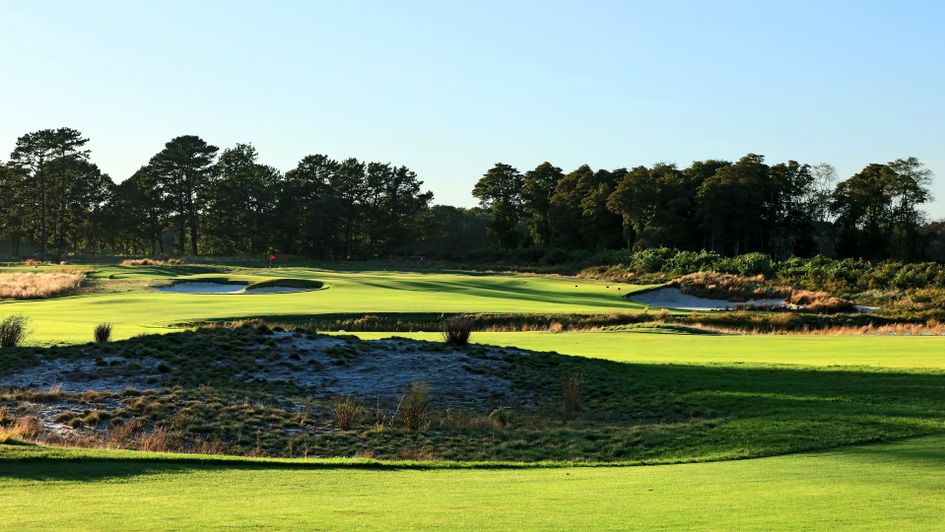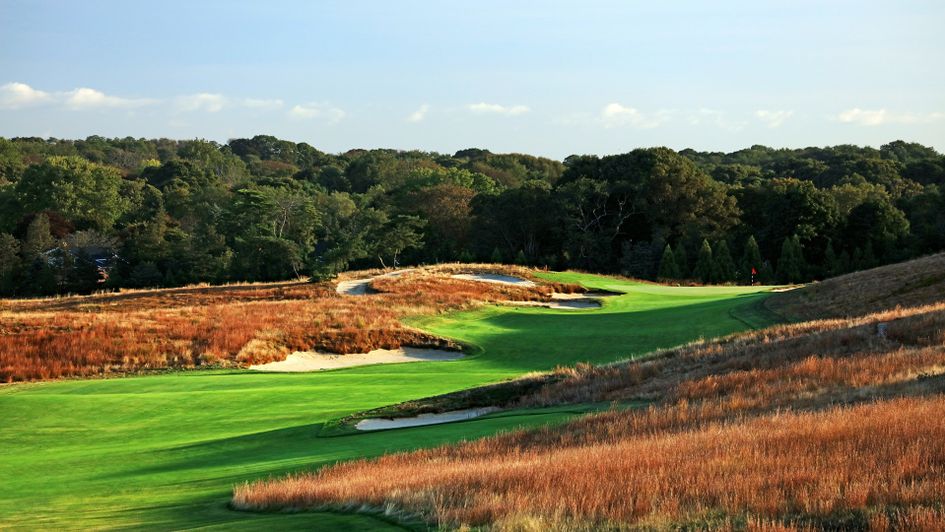Press Association Sport's Phil Casey provides a hole-by-hole guide to Shinnecock Hills, which is accompanied by pictures from David Cannon of Getty images.
1st: 399 yards, par 4

A relatively benign start from an elevated tee near the clubhouse. The fairway narrows considerably from 275 yards, meaning players may decide to lay up short of the fairway bunkers or, if the hole is playing downwind, attempt to drive close to the green.
2nd: 252 yards, par 3

Easily the longest par three on the course after being lengthened by 26 yards since the 2004 US Open. The prevailing wind should at least offer assistance to reach a green which is open in front, although there is a small upslope just short of the putting surface.
3rd: 500 yards, par 4

A new tee adds 22 yards to the hole and has been moved further left to exaggerate the angle on the dogleg, although the fairway is still more than 30 yards wide at the 300-yard mark.
4th: 475 yards, par 4

A difficult hole made harder by the addition of 40 yards in length and being typically played into the wind. The best angle of approach to a slightly elevated green is from the right side of the fairway.
5th: 589 yards, par 5

Another hole which has been lengthened, this time by 52 yards, although the prevailing wind does offer some assistance in trying to reach the green in two. A good birdie opportunity.
6th: 491 yards, par 4

A dogleg right which features a blind tee shot and the only water hazard on the course short of the green, although it should not come into play too often. An accurate approach will be required to a green which slopes from back to front.
7th: 189 yards, par 3

A representation of the famous Redan hole at North Berwick features a green that slopes from front right to back left, meaning the back-left bunker could see a lot of action. Missing the green long will lead a tricky recovery shot up the slope.
8th: 439 yards, par 4

Lengthened by 41 yards since the 2004 US Open and played into the prevailing wind, with the left side of a generous fairway offering the best angle of approach to the green.
9th: 485 yards, par 4

A difficult finish to the front nine thanks to a blind tee shot to a sloping fairway that could produce some uneven lies. An uphill approach means players are likely to only see the top of the pin and going too far will leave a testing downhill chip.
10th: 415 yards, par 4

Players can opt to hit a tee shot of around 250 yards to find a level lie on a plateau in the fairway or drive over the hill to get closer to the hilltop green, which will demand an accurate approach.
11th: 159 yards, par 3

The shortest hole on the course but demanding nevertheless due to a small green surrounding by bunkers which slopes from the back left to the front right. Going over the green leaves a difficult pitch shot down the slope.
12th: 469 yards, par 4

The length of the hole has not been changed since 2004, with a premium placed on an accurate tee shot to a narrow fairway to set up the approach to a large green. No bunkers protect the green, but several ridges in the putting surface add to the difficulty.
13th: 374 yards, par 4

The shortest par four on the course is a potential birdie opportunity, although the fairway is just 16 yards wide at the 300-yard mark. An undulating green is guarded by bunkers to the left and right of the putting surface.
14th: 519 yards, par 4

The longest par four on the course after being lengthened by 77 yards, although the tee shot does play downhill to a fairway which slopes from right to left. The approach shot plays slightly uphill to a green which slopes from back to front.
15th: 409 yards, par 4

Another hole which features a significant drop in elevation from the tee to the fairway, offering up a good birdie opportunity even though the green is protected by six bunkers.
16th: 616 yards, par 5

A genuine three-shot par five thanks to its length and being played into the prevailing wind, the hole is made tougher by a twisting fairway flanked by numerous bunkers and a narrow green protected by more sand.
17th: 180 yards, par 3

Restoration has resulted in an enlarged putting surface at the back left of the green, but an accurate approach will be required due to a prevailing crosswind from the left and bunkers on either side of the green.
18th: 485 yards, par 4

A new tee adds 35 yards to the closing hole and creates more of a partially blind tee shot. The right-hand side of the fairway offers the best angle of approach to a green which slopes from back to front.






